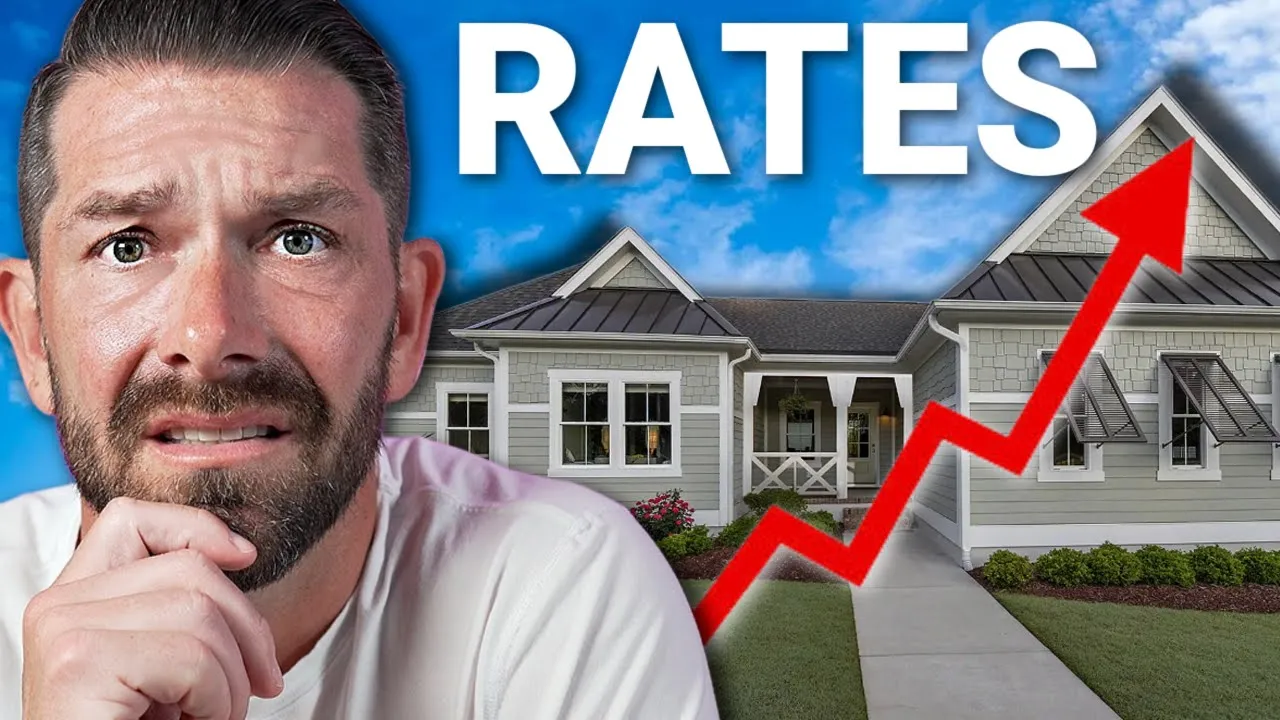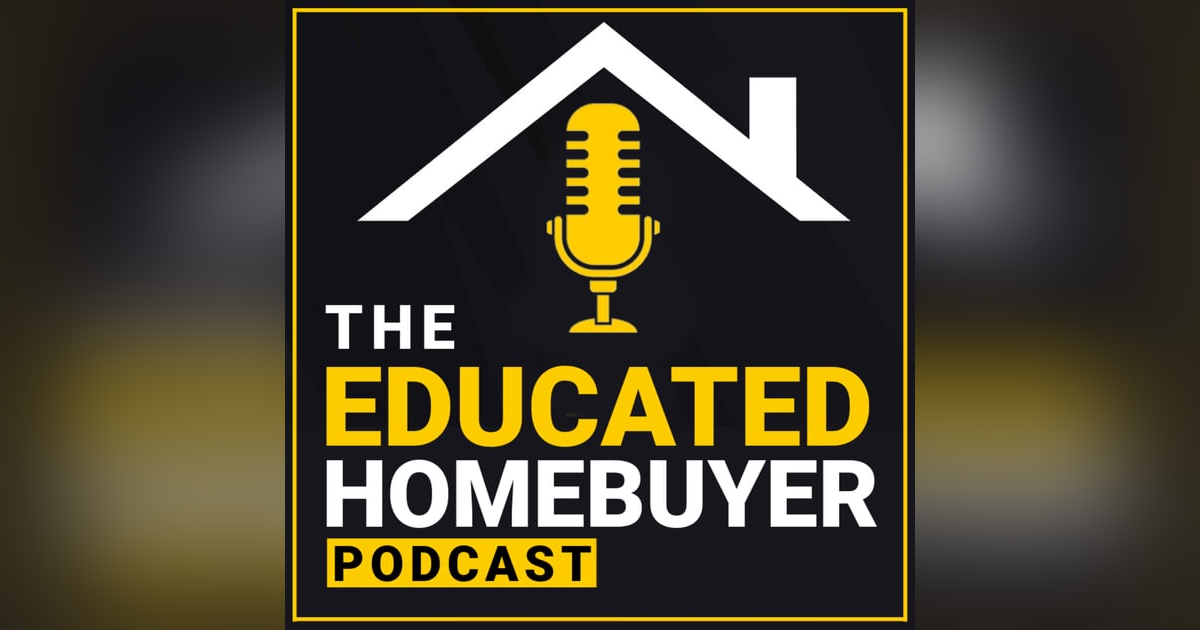Mortgage Interest Rates RISE After Fed CUT

Mortgage Interest Rates RISE After Fed CUT
Yes, you read that right. The Federal Reserve just cut interest rates for the first time in over a year—and yet, mortgage interest rates actually went up. If that sounds backward, you're not alone. Many homebuyers and investors are asking the same question:
"Why are mortgage interest rates still stuck in the sixes—or even higher—if the Fed is cutting rates?"
In this post, we’ll break down:
- What the Fed really controls (and doesn’t)
- Why mortgage rates jumped after a Fed cut
- What hawks vs. doves are saying about inflation and employment
- What the data suggests about housing, rates, and the economy for 2025
- Why smart homebuyers should stop trying to time the market
🎥 Watch the Full Episode
👆 Get the full breakdown from Jeb and Josh
👉 Need help planning your next move? Start here
Table of Contents
- The Fed Cut… But Mortgage Rates Rose?
- Understanding the Fed’s Dual Mandate
- The Hawk vs. Dove Tug of War
- Why Mortgage Interest Rates Aren’t Dropping
- The Reality for Homebuyers in 2025
- When to Lock, Refinance, or Wait
- Expert Takeaways: What You Need to Know
- Final Thoughts: Timing the Market vs. Building a Plan
The Fed Cut… But Mortgage Rates Rose?
Let’s start with the headline-grabber: The Fed just issued its first interest rate cut in over a year, but mortgage interest rates rose.
It sounds contradictory, but it’s not.
Here’s why:
- The Federal Funds Rate is a short-term rate affecting overnight bank lending.
- Mortgage rates, on the other hand, are long-term rates influenced by the 10-year Treasury yield, investor sentiment, inflation expectations, and future Fed policy—not just today’s cut.
When markets anticipate a Fed cut, that’s already baked into long-term rates before the actual announcement.
So, ironically, a cut that was already expected can lead to rising mortgage rates if markets believe:
- The Fed may be too slow to react
- Inflation remains sticky
- Economic data doesn't warrant further easing
📈 Key takeaway: Mortgage interest rates move based on expectations—not headlines.
Understanding the Fed’s Dual Mandate
To understand how this all ties together, we need to revisit the Fed’s dual mandate:
- Price Stability → Control inflation
- Full Employment → Keep the job market strong
But here’s the problem: These goals are often at odds.
If the Fed cuts too early, inflation could reignite. If the Fed waits too long, the economy and job market could weaken unnecessarily.
This internal tension has created two factions inside the Fed.
The Hawk vs. Dove Tug of War
🦅 The Hawks
- Want to keep rates high until inflation shows sustained progress
- Believe easing too early could undo hard-fought progress
Notable voices:
- Susan Collins (Boston Fed): “No urgency to ease. Inflation remains more persistent than expected.”
- Rafael Bostic (Atlanta Fed): “We may not hit 2% inflation as soon as people hope.”
- Loretta Mester (Cleveland Fed): “We may still need to raise rates if inflation doesn’t fall.”
🕊️ The Doves
- Believe policy is already too restrictive
- Want to ease pressure on jobs and the broader economy
Dovish voices:
- Adriana Kugler: “We’re already restrictive and slowing growth.”
- Austan Goolsbee: “Trueflation is already around 2%—so inflation fears may be overstated.”
- Mary Daly (San Francisco Fed): “We need to balance inflation control with economic growth.”
Why Mortgage Interest Rates Aren’t Dropping
Despite all this internal debate, mortgage interest rates are stuck between 6.5% and 7%, and here’s why:
- The market front-runs the Fed. Traders don’t wait—they move when expectations change.
- Fed cuts that are already priced in don’t lower rates further.
- Economic data is muddy, making future cuts less certain.
- Sticky inflation metrics (especially housing-related ones) skew the data the Fed uses.
Even though Fed Funds Futures are pricing in two more cuts, that won’t move mortgage interest rates substantially unless we see:
- A significant softening in the job market
- Clear and sustained disinflation
- A recessionary slowdown (which no one is rooting for)
The Reality for Homebuyers in 2025
We’ve entered a new normal: A grind lower, not a crash lower.
Here's what that looks like:
- Mortgage rates drop a little → bounce back → drop again → bounce again
- The range-bound cycle continues between 6.5% and 7%
- Occasional dips will create opportunities to lock favorable rates
- Timing the market = gambling
💡 Pro Tip: If you see a payment that works, lock the rate. Future refinance opportunities will likely exist. Waiting for the “perfect rate” often leads to regret and higher payments.
When to Lock, Refinance, or Wait
Josh & Jeb offered some powerful advice in this episode:
- 🎯 Buyers: Don’t chase a vanity interest rate. If the payment works for your life today, lock and move forward.
- 💸 Refinancers: Look for low/no-cost options. If your breakeven is under 18 months, ring the cash register.
- 🧠 Strategists: Work with a team that can run your numbers, watch the market, and help you strike when the time is right.
🧠 “Don’t try to time the market—plan for it.”
Expert Takeaways: What You Need to Know
- ✅ The Fed is likely to cut two more times—but don’t expect mortgage rates to fall dramatically
- ✅ Inflation remains above target, and Fed members are split on what comes next
- ✅ Mortgage rates react to expectations, not events
- ✅ Lock a rate you’re comfortable with—don't wait for the lowest number
- ✅ Refinance when it makes sense, not when it’s “perfect”
Final Thoughts: Timing the Market vs. Building a Plan
The most important lesson from this episode?
The smartest buyers don’t try to “win” on rate—they win on strategy.
You can’t outguess the Fed. You can’t outmaneuver market volatility. But you can:
- Lock a rate that works for your budget
- Secure a home that meets your long-term goals
- Refinance later when the data allows
Need a clear plan tailored to your goals?
Talk to Josh and the team at The Educated HomeBuyer.


